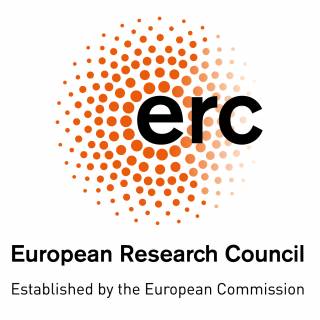Political groups are key power players in the European Parliament, yet they are relatively unknown to European citizens. Ahead of the EU elections 2019, it is important to shed light on the EP’s political groups as gender equality actors. Struggles about gender equality within and between groups and the groups’ gendered practices reveal that the EP is not the champion of gender equality and democracy it is often understood to be.
This blog post by Anna Elomäki and Johanna Kantola opens a week of EUGenDem #EUelections2019 posts highlighting our research in the context of the upcoming elections. Our other blog posts will focus on representation of black and ethnic minorities in the European Parliament, Brexit and #MeTooEP.
 Next week’s EU elections will shape the future of the European Parliament as an actor for key European values – including gender equality – for the five years to come. The work of the European Parliament, like of any political institution, is based on norms and practices, which set different groups of people in different position. This holds true for the policies that these institutions adopt as well as for these institutions as workplaces for political representatives and staff.
Next week’s EU elections will shape the future of the European Parliament as an actor for key European values – including gender equality – for the five years to come. The work of the European Parliament, like of any political institution, is based on norms and practices, which set different groups of people in different position. This holds true for the policies that these institutions adopt as well as for these institutions as workplaces for political representatives and staff.
European Parliament is considered the champion of gender equality and democracy in the European Union. A closer look at the parliament reveals that it is not unified in promoting gender equality and that the institution itself is far from gender equal.
Our research project looks at how gender underpins the work of the relatively unknown key power players of the European Parliament: the political groups that are conglomerates of national political parties and different political cultures. The political groups, whose power has increased in the past years, fundamentally matter for advancing gender equality in the EU.
The gendered realities of the European Parliament’s political groups also matter for the European representative democracy. Gender equality is at the heart of European democracy and integration. Without attention to gendered inequalities in the EU’s representative institution, there can be no healthy representative and inclusive democracy in the EU.
At the same time, the rise of the populist radical right parties across Europe has meant that “gender” has become a battleground in European politics. Calls to traditional values and women and men’s traditional roles in society frame gender equality as a dangerous “gender ideology”. These struggles that also take place in the European Parliament have real effects for European politics that seek to advance women’s rights in relation to economic and social policies, and gender violence – all topics of our research project.
European Parliament’s policies and gender
The parliamentary term 2014–2019 was no heyday for the EU’s gender equality policies. After years of advancement and increasing professionalization, the combined effects of the economic crisis, lack of political will and a conservative turn in the political climate meant that gender equality was pushed to the margins. The European Parliament has not been immune to these developments, and gender equality has become an increasingly contested issue within the EP.
The political groups’ positions on gender equality vary by issue, but overall the left GUE/NGL group, the Greens/EFA group and the social democrats (S&D) are the most progressive groups. They put forward gender equality specific initiatives and integrate a gender perspective in other policy fields. The liberal ALDE puts less emphasis on gender equality as a group even if it has influential individual MEPs who promote of equality.
The centre right EPP group, the biggest group in the parliament, is more conservative. The right populist groups – the conservative ERC and more radical right EFDD and ENF – tend to frame advancing gender equality as a question for member states, not the EU. Gender equality can thereby become trapped in their broader eurosceptic agenda. The radical right groups also construct gender inequalities as a problem of “other cultures”, most often Muslim ones.
Gender equality questions are therefore polarized in the European Parliament on the left/right axis. The green and left groups promote feminist definitions and solutions, and the conservative and populist right strongly opposes these.
Sexual and reproductive health and rights is one of the key points of conflict between the groups, and abortion and sexual education have become increasingly contested issues in the EP. The Greens and the left have pushed for a progressive agenda, but the EPP and the radical right groups have been able to water down the EP stance. Also political groups are divided on the topic: the EPP’s official line is contested by a liberal minority.
Struggles around gender equality in the European Parliament extend to other policy fields. For example, in the field of economic policy the gendered effects of the EU’s economic policies as well as the role of gender issues in economic policy divide the groups.
EPP and ALDE have continued to push for cuts in public spending bypassing the social and gender impacts of these policies. Greens/EFA, S&D and GUE/NGL are critical of austerity, call for more balance between the EU’s social and economic goals and propose more equality friendly visions of the economy. Yet gender equality gets sidelined in political compromises between the groups.
Gendered practices of the EP’s political groups
The political groups of the EP differ from one another also in terms of how they take – or do not take – gender equality and anti-discrimination into account in their daily work. The groups vary in terms of women’s representation in top positions, as well as in terms of the informal practices and expectations that may set hurdles for the advancement of women and minorities.
Women’s representation in the EP (36% in the 2014–2019 term) is higher than in national parliaments in average. Variations are, however, great by political groups. In the 2014–2019 term women’s representation was highest in the GUE/NLG group (50%), S&D (46%), Greens/EFA (42%) and ALDE (39%). In the EPP group as well as in the right populist ECR and ENF groups women’s representation remained below 30%.
There is also a severe lack of racial and ethnic diversity in the European Parliament policy making. In the 2014-2019 term there were only 17 MEPs, many of the from UK, who identified as non-white. The lack of ethnic and racial minority MEPs can have negative effects on anti-discrimination policies, as anti-racism initiatives are not prioritised by the white majority.
When we look at the gender composition of the political groups at the highest levels of power – in leadership and coordinator roles – where gender inequalities are often most effectively revealed, we find that the GUE/NGL and Greens/EFA are the most gender equal groups. They are followed by the S&D and the liberal ALDE and the right populist EFDD.
The most gender unequal are EPP and ECR. However, the EPP group shows some recent practices to enhance gender equality within their group, through some provisions for gender balanced representation and informal women’s networks. One of the ECR’s two president has a minority ethnic background.
With the European Parliament and its political groups being far from gender parity and equality, gendered hierarchies and norms as well as expectations about the capabilities and appropriate roles of women and men politicians still shape the parliamentary work.
At the intersection of age and gender, it is young women who have to do most work to prove themselves as competent politicians. Women’s expertise is often challenged in the field of economics, and the working culture in the corresponding committees reflects masculine values.
The norms of long working hours and the institution of personal voting are some of the examples of gendered practices that need to change to make it easier for politicians and staff to reconcile work and family or private life.
Gendered hierarchies are also visible in the persistence of sexual harassment in the EP. The #MeTooEP campaign has been successful in exposing these gendered power relations between MEPs and staff in the parliament.
Future challenges
The EP elections 2019 represent an opportunity to bring gender equality policy back to the EU’s agenda and make the EP a real rather than assumed champion of gender equality.
The formation of the new political groups and parliamentary committees is an opportunity to improve gender parity in the groups’ and EP’s leadership roles. There is, however, uncertainty about the political representation of ethnic and racial minorities in the next parliament.
Much of future of the EP as a champion for gender equality will depend on the new power balance of the EP’s political groups. Will the groups with strong gender equality and anti-discrimination policies get a majority, or will conservative, anti-gender and racist voices in the EP grow stronger? Will the content of the EP’s gender equality policies be watered down due to the projected increase of radical right MEPs and the potential new radical right group? Will the EP agree to step up in the fight against sexual harassment within the institution?
Dr Anna Elomäki is Senior Researcher in EUGenDem, Gender Studies, Tampere University.
Professor Johanna Kantola is the director of EUGenDem, Gender Studies, Tampere University
You can read more about these issues from our recent research:
Johanna Kantola and Lise Rolandsen Agustin (2019): ‘Gendering the representative work of the European Parliament: A political analysis of women MEP’s perceptions of gender equality in party groups’, Journal of Common Market Studies (JCMS), out soon
Johanna Kantola and Lise Rolandsen Agustin (2016) ‘Gendering transnational party politics: The case of European Union’, Party Politics 22 (5), 641-651.
- These two pieces look at the political struggles around gender equality between the European Parliament’s political groups in relation to austerity politics and sexual health and reproductive rights (Kantola and Rolandsen Agustin 2016) and Danish and Finnish MEP’s perceptions of gender equality in the political groups and the parliament: the pros and the cons and what remains to be done (Kantola and Rolandsen Agustin 2019)
Johanna Kantola and Emanuela Lombardo (eds.) (2017) Gender and the Economic Crisis in Europe: Politics, Institutions and Intersectionality (Palgrave Macmillan).
- This book looks at the gendered effects of the economic crisis across Europe – especially through its political effects: on EU’s gender equality policies; on Europeanised policies in member states; and on social and women’s movement activism.
Johanna Kantola and Emanuela Lombardo (2019): ‘Populism and feminist politics: The cases of Finland and Spain’, European Journal of Political Research (EJPR). Open access: https://doi.org/10.1111/1475-6765.12333
- This piece looks at both left populism and right populism in Europe and their meaning to feminist politics and gender equality. The cases are Podemos in Spain and The Finns Party in Finland. The article finds that despite strong commitment to feminism and equality, the masculine ethos of populism poses challenges for feminist politics even in the case of left populism in Spain.
Anna Elomäki and Johanna Kantola (2018) ‘Theorizing feminist struggles in the triangle of neoliberalism, conservatism, and nationalism’, Social Politics 25 (3), 337-360. Open access: https://doi.org/10.1093/sp/jxy013
- This article develops a theoretical argument tested in an empirical case of women’s movement activism in Finland that the current triangle of neoliberalism, conservatism and nationalism is particularly challenging to feminist activism. Some groups deal with the challenges better than other which also changes the composition of gender activism

